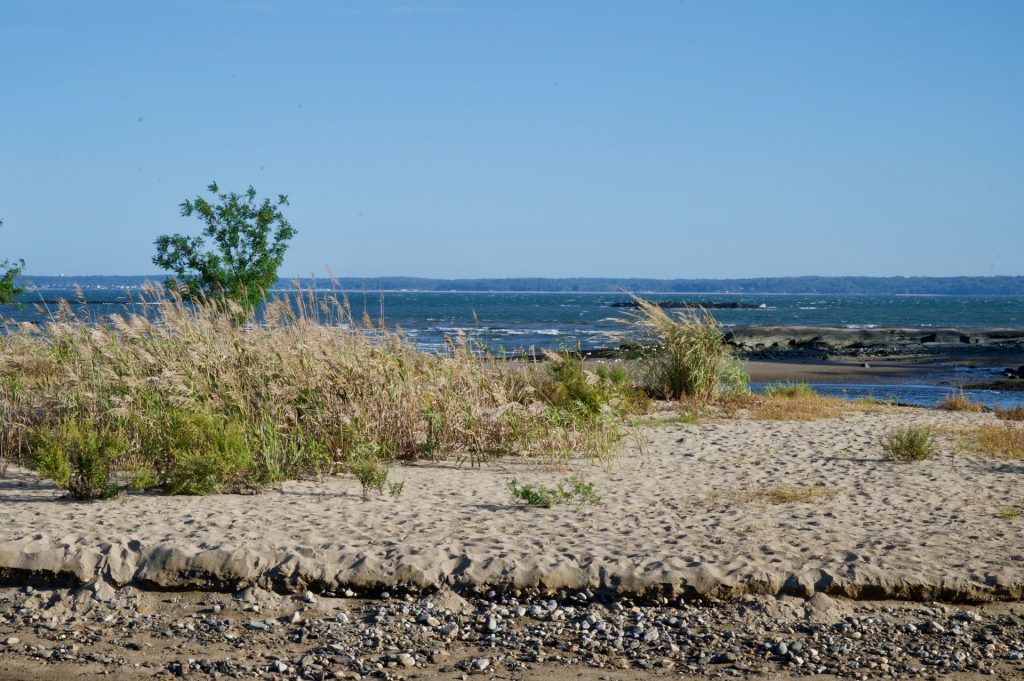Willow trees are the unsung heroes of Vermont’s lakefront landscapes due to their exceptional ability to reinforce shorelines without compromising aesthetics. Native species like Black and Pussy Willow thrive in moisture-rich riparian zones, providing rapid growth that quickly stabilizes soil against erosion. Their extensive, fibrous root systems anchor the soil, mitigate water flow erosion, and absorb excessive water, reducing flood risks. These roots can penetrate small spaces, securing rocky soils effectively. Additionally, willows enhance visual appeal with their graceful branches, support local biodiversity, and create sheltered environments for wildlife. By planting willows in early spring or late fall, you can guarantee robust root networks and a stable, ecologically rich shoreline, and continuing to explore these methods will reveal even more benefits.

When it comes to reinforcing Vermont’s lakefronts, willow trees stand out as a natural and effective solution. Their deep, fibrous root systems grasp the soil, mitigating the forces of high water flows and stabilizing the shoreline, making them ideal for preventing erosion[3][4][5]. By planting willows, you not only reinforce seawalls but also enhance the aesthetic and ecological value of the landscape, aligning with local regulations and boosting biodiversity.
When considering Vermont’s lakefront landscapes, you’ll find that native willows, such as Black and Pussy Willow, are ideal due to their rapid growth and moisture-loving roots. These trees thrive in riparian zones and flood-prone areas, where their extensive, fibrous root systems help stabilize soil and absorb wave energy. By planting willows, you can reinforce seawalls naturally, enhancing both shoreline stability and aesthetic appeal.
Native willows, such as Black and Pussy Willow, are ideally suited for Vermont’s lakefront landscapes, particularly in riparian zones and flood-prone areas. Their rapid growth and moisture-loving roots make them perfect for shoreline stabilization. As native shoreline buffer plants, they naturally reinforce soil and absorb wave energy, aligning with shoreline stabilization guides and enhancing aesthetics. Black willow planting is a key strategy for effective shoreline stabilization with trees.
When using willows for shoreline reinforcement in Vermont, you’re leveraging their deep, fibrous root systems to stabilize soil and prevent erosion. These roots can grow into the smallest spaces of rocks and soil, keeping them in place and absorbing wave energy that might otherwise erode the shoreline. By planting willows, you not only reinforce seawalls naturally but also filter runoff, reducing the risk of sedimentation and nutrient runoff into the water.
Willow trees play an essential role in stabilizing soil, buffering wave impact, and filtering runoff along Vermont’s shorelines, making them an indispensable complement to traditional seawalls.
Here are some key ways willows enhance shoreline stability:
When you incorporate willow trees into your Vermont lakefront landscape, you’re not just stabilizing the soil and preventing erosion; you’re also enhancing the visual appeal of your shoreline. The graceful, sweeping branches of willows create a beautiful backdrop that attracts birds, pollinators, and aquatic life, making your lakeside a thriving habitat. By choosing native willow species, you support local biodiversity and adhere to the principles of the Shoreland Protection Act, all while maintaining a stunning and resilient landscape.
The serene beauty of a Vermont lakeside is considerably enhanced by the graceful form of willow trees, which are not only aesthetically pleasing but also serve as an essential habitat for a diverse array of wildlife.
Here are some ways willows enrich your shoreline:
When planting willows along Vermont shorelines, start by selecting native willow species to guarantee compatibility with the local ecosystem. Plant the willow cuttings in the early spring or late fall, when the trees are dormant, to enhance their chances of successful establishment. Space the cuttings 0.75 to one meter apart, in rows parallel to the waterway, and stagger the rows to maximize soil stabilization and aesthetic appeal.
To create effective shoreline buffers in Vermont, willows are often planted in strategic combinations with other native species. Here’s how Open Earth Landscaping implements successful shoreline buffers:
